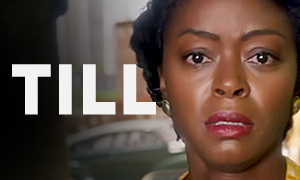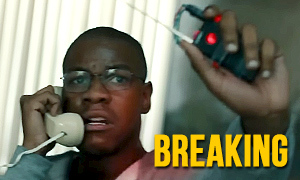Is "Lady in the Lake" Based on a True Story? History vs. Hollywood
Is Lady in the Lake based on a book?
Apple TV's Lady in the Lake miniseries is based on Laura Lippman's 2019 novel of the same name, which tells the story of a Jewish housewife named Maddie Schwartz who is bored with her husband and leaves him to become an investigative journalist in downtown Baltimore. The book's story was inspired by two unrelated deaths in Baltimore in 1969: the death of a 35-year-old black woman named Shirly Parker and the murder of an 11-year-old Jewish girl named Esther Lebowitz. It is the death of Parker, who is renamed Cleo Sherwood, that becomes the focus of the book and series. The largely fictional story addresses how the two deaths were treated differently at the time, with the death of Parker, whose body was found in the fountain of a lake, being quickly forgotten after it received little attention from the press.
Is Natalie Portman's character, Madeline "Maddie" Schwartz, based on a real person?
No. In the series, Maddie is a pampered housewife and mother who suddenly realizes after almost twenty years of marriage that her life lacks meaning and she's not truly happy. She abandons her marriage, believing that she needs to make good on the promise she made to herself when she was younger to embrace her passions. She helps the Baltimore police find the body of a young Jewish girl, which leads to a job with the Star, the city's afternoon newspaper. While facing misogyny as she tries to make a name at the paper, she comes across the story she believes will catapult her career: Cleo Sherwood, a missing black woman whose body was discovered inside the fountain of a city park lake. As stated earlier, this was inspired by Shirley Parker's death.
Maddie begins her investigation into Cleo's death, determined to find answers as her own self-centeredness causes her to ignore the people who are right in front of her. This is similar in theme to last year's Hulu miniseries Boston Strangler, which found Keira Knightley's reporter character continually choosing work over her family. However, in this case, none of it happened in real life. The Lady in the Lake true story reveals that Maddie is an entirely fictional character.
Of the character, the book's author, Laura Lippman, told NPR:
I set out simply to write a novel about a woman who wanted to matter — who had these sort of restless, shapeless ambitions and needed to find a place to put them. ... The world in the mid-1960s was filled with women who were thinking, 'I'm not done. This can't be it. I think I would like to do something more with my life.'
Did the two real-life deaths happen in 1966?
No. The real-life disappearances of 11-year-old Esther Lebowitz and 35-year-old Shirley Parker happened in 1969. Author Laura Lippman set her story in 1966 because she believed "it was kind of one of the forgotten years of the '60s."
Were the two deaths related in real life?
No. The Lady in the Lake miniseries ties the two deaths together via the fictional protagonist, Maddie Schwartz (Natalie Portman), a bored housewife who decides one day to leave her husband and try to make a name for herself as a crime reporter in Baltimore. Through Maddie's eyes, we see the disparities in how the press treated the two disappearances, with the death of the black woman, Cleo Sherwood, being almost entirely ignored. In real life, the two deaths were completely unrelated.
What were the circumstances around the death of Shirley Parker, the inspiration for the Cleo Sherwood character in the series?
35-year-old Shirley Lee Wigeon Parker's body was discovered on June 2, 1969 when an electrical crew arrived to repair two burned-out lights in the fountain in the center of Baltimore's Druid Park Lake. The first worker up the ladder made the grim discovery: Parker's badly decomposed body was lying face down in roughly two feet of water in a depression inside the top of the fountain. Parker, the mother of two boys who were 9 and 14, was a twice-divorced bookkeeper, barmaid, and waitress at the famous Sphinx Club in Baltimore. She is renamed Cleo Sherwood in the series and portrayed by Moses Ingram.
Shirley Parker is believed to have last been seen five weeks earlier on the evening of April 23, 1969 when she went to meet friends at a bar. During the evening, she learned that the man she'd been dating, Arno West, had cashed her paycheck and bought a pantsuit for another girlfriend he'd been seeing. Furious, Shirley hurried from the bar around midnight and headed for Gwynns Falls Parkway, where Arno lived with his mother. Neighbors heard them arguing loudly on the porch. Later, Arno denied a claim that he had given Shirley "a nasty blow." As tensions seemed to have calmed, Arno took Shirley to another bar and then to see some friends. She was still angry, so Arno took her for a drive to calm her down. Arno claimed she asked him to drop her off in Druid Hill Park near the lake. He told police he became worried, so he followed her and persuaded her not to enter the lake. He said that he then drove her home.
While Arno West is the most likely suspect, Shirley Parker's body was too badly decomposed for the coroner to determine a cause of death, only to rule out certain causes. For example, she hadn't overdosed and she wasn't strangled, stabbed, or shot. The assistant medical examiner doesn't believe it was possible that she drowned herself, but it was possible that she was drowned before her body was put in the fountain.
Overall, how accurate is Lady in the Lake?
The miniseries is mostly fiction, including its protagonist, Maddie Schwartz (Natalie Portman). Author Laura Lippman used two real-life crimes as her inspiration, but she admitted to NPR that she didn't do much research into the two deaths:
Once I've decided that a real-life crime is going to be my inspiration, I do no more research about it. Because I don't really want to know about that crime. I've been drawn to it because of some sort of thematic possibility. ... It's like, this is the story I want to tell, so I can't be weighed down by what's true.
Lippman said that she watched a lot of Dean Martin variety shows on YouTube to pick up details about the era. She looked at old magazine ads and read the recipes in The New York Times in order to understand what her character would be absorbing at that time.
None of this is a knock against Lippman, who is fully transparent that her stories are "inspired by crimes" and not based on true stories. In fact, Lady in the Lake is so removed from the real-life deaths that influenced it that the trailer for the Apple TV+ limited series leaves out any mention of it being inspired by real events.







